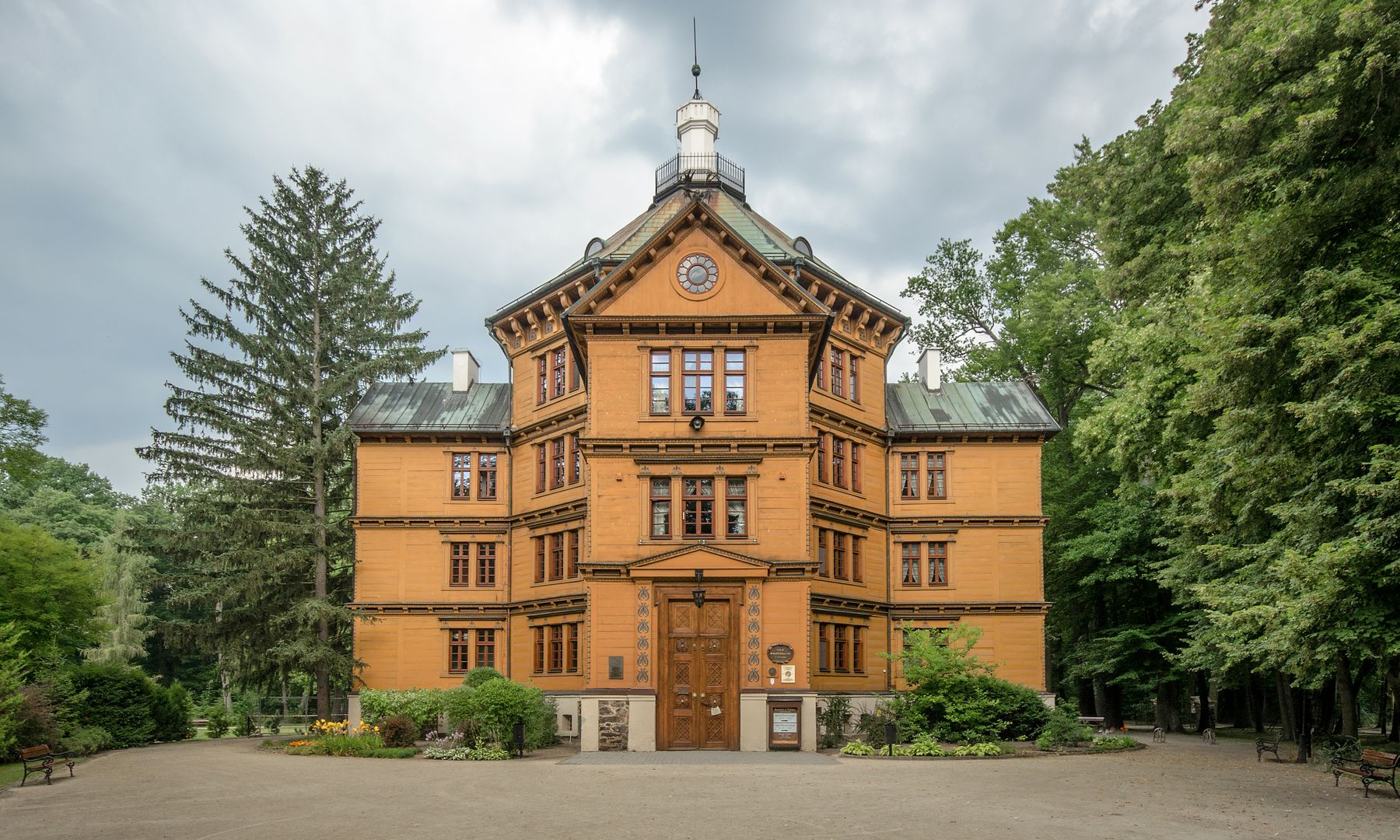Antonin Palace
6.68

Overview
The Antonin Hunting Palace of the Radziwiłł princes, built between 1822 and 1824 by Karl Friedrich Schinkel for Prince Antoni Radziwiłł, is an exceptional example of hunting architecture in Poland. The structure is wooden, clad in weatherboards, with a stone foundation, and built on a Greek cross plan. Its main body is octagonal in shape, with four lower wings. The palace’s facade is painted in imperial yellow, giving it a distinctive appearance. The interior of the main hall, which spans three stories, features a decorative ceiling and hunting trophies, and once served as a concert venue. Prince Antoni Radziwiłł hosted Frédéric Chopin here twice, commemorated by a plaque on the facade and a statue of the composer in front of the palace.
Between 1939 and 1944, the palace was owned by Adolf Hitler after being gifted by its then-owner, Prince Michał Radziwiłł. After World War II, the palace stood abandoned until 1974, when restoration efforts began under the initiative of Jerzy Waldorff, lasting until 1978. This restoration was awarded the prestigious Europa Nostra ’94 distinction. Today, the palace operates as a hotel and restaurant, surrounded by an extensive English-style park with monumental trees and a pond containing the tomb of Antoni Radziwiłł’s daughters. Nearby, historic Tyrolean-style buildings can also be found. The palace hosts the International Festival "Chopin in Autumn Colours," underscoring its significance in the cultural landscape of the region.
Location
2025 Wizytor | All Rights Reserved